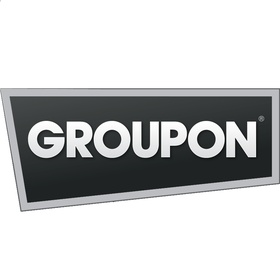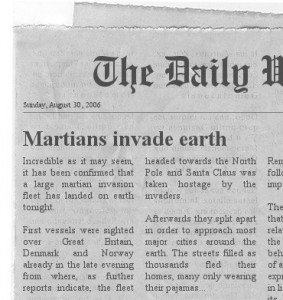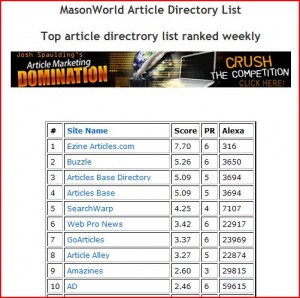Archive for March, 2011

Of all the things that make me sad or sentimental about the continuous march of technology, one of the worst is probably the demise of printed words…whether they be in newspapers, magazines or actual, non-Kindle books. Sure, looking up fantasy baseball stats every morning at the breakfast table from the Sports section was a lot less convenient to logging on at any time and getting them instantly…but in retrospect, maybe a bit more fun…and more of an “experience”. This recent news:
SAN FRANCISCO (AP) — Newspaper advertising in the U.S. has sunk to a 25-year low as marketing budgets followed readers to the Internet, where advertising is far cheaper than what publishers have been able to command in print.
Advertisers spent $25.8 billion on newspapers’ print and digital editions last year, according to figures released Tuesday by the Newspaper Association of America. That’s the lowest amount since 1985 when total newspaper advertising stood at $25.2 billion.
After adjusting for inflation, newspaper advertising now stands at about the same level as nearly 50 years ago. In 1962, newspaper advertising totaled $3.7 billion, which translates to about $26 billion today.
Print advertising has fallen in each of the past five years, dramatically shrinking newspaper publishers’ main source of income. Even as the economy has gradually improved since 2009, newspapers are still bringing in less revenue as advertisers embrace free or cheaper Internet alternatives that aim to deliver the messages to people most likely to be interested in the products being pitched. The shift has accelerated in recent years as more readers abandoned newspapers’ print editions for the Web.
Newspapers have been mining their digital editions for more revenue. Online ads generated $3 billion for newspapers last year, an 11 percent increase from the previous year. Meanwhile, print ads dropped 8 percent to $22.8 billion. Before the slump began in 2006, print advertising generated about $47 billion in annual revenue for newspapers.
To cope with the upheaval, newspapers have cut their staffs, raised their prices and, in the most extreme cases, filed for bankruptcy protection to lighten their debt loads.
Many publishers are pinning their comeback hopes on delivering more news to the growing audience on mobile phones and tablet computers such as Apple Inc.’s iPad.
Tablets, in particular, could create new moneymaking opportunities because early research indicates that their users tend to spend more time reading stories and watching video on those devices than they do on laptops and desktop computers. That trend could help newspapers charge higher rates for ads on their tablet editions than they do on their websites and perhaps make it easier to sell subscriptions to digital editions. With the exception of The Wall Street Journal and a few other newspapers, most publishers have given away their content on the Web — a factor that contributed to their financial woes in recent years.
Publishers would settle for any sign of overall ad growth after 16 consecutive quarters of decline from the previous year. The severity of the slide has been easing since 2009 as the U.S. economy has gradually recovered from the deepest recession since World War II.
Newspaper advertising totaled $7.3 billion in the last three months of 2010, down 5 percent from the prior year. The quarterly decreases have been getting progressively smaller since the July-September period of 2009, when newspaper ad revenue plunged 29 percent from the previous year.
Online ads were the bright spot again in last year’s fourth quarter, rising 14 percent to $878 million. The Internet now accounts for about 12 percent of newspaper’s ad revenue, up from 4 percent in 2005.
“Quarter after quarter, newspaper advertising has shown signs of a continued turnaround and an essential repositioning,” said John Sturm, the Newspaper Association of America’s president.

Is Groupon Good or Bad For Retailers?

This social coupon craze has become a big thing. For retailers, the question is whether it’s a good thing or bad thing. Sites like Groupon and the many clones that have sprung up (the local newspaper, the Post Dispatch, now has a similar service) can certainly drive traffic into stores. But many are not prepared for the onslaught – creating negative customer experiences.
And these services are also creating what we call the “Famous Barr syndrome”. (For those not familiar, Famous Barr was a Midwestern U.S. department store chain, since absorbed into Macy’s). They had “big sales” and offered large discount coupons so often that people became reluctant to shop there unless there was a current promotion. Sites like Groupon do the same thing, training people to expect that they can get a coupon for almost anything.
Coupons have of course been around for years, and have been available on the Internet since the earliest days. But now there are so many services and websites offering discounts, the customer is becoming trained to never, ever pay full price. This pricing model works well for some businesses, not so well for others.
And whether a retailer or other merchant makes money depends on many factors, such as if the new customer spends more than the face value of the coupon; how many current/existing customers purchase a coupon – and now pay less for something they paid “full price” for in the past; what percentage of the discount customers become regular customers; and the cost of delivering the additional sales created from the coupons.
The truth is, when you charge some (current, satisfied, loyal) customers full price…and other (brand new) customers half off, you make some people happy and others unhappy. And you are making the wrong category of customer happy!
Regulars may be upset because they feel they’ve overpaid; the discount customers are happy, though it’s likely that many will not return to pay regular price.
When you decide to offer a daily deal, you are potentially training your existing customers to wait for the next coupon. And research shows that brands which discount themselves can easily do damage to their image through aggressive discounting. Does that sound like a recipe for success?
Think before you join the coupon herd. Bottom line, busier does not always mean more profitable.

Article Marketing in 7 Easy Steps
Article marketing is a great way to improve your credibility and boost your website traffic. But you can’t just submit any old rubbish to the directories. Here are the seven pillars you should consider every time you want to write an article.
1. Prepare
A good article requires good research. This requires visiting websites, reading the news, spending some time surfing forums in your niche, reading blog posts and comments, and reviewing sites like Yahoo Answers. Find problems that people have that you can provide a solution to.
2. Produce
When you have your article idea you are ready to start writing. Your article needs to be well structured. In the introduction to the article you need to outline the problem for the reader. Then break the solution down into a series of short paragraphs; walk them through it step-by-step. Finally you need to summarize the solution. The first two steps in this process are often the hardest for business owners and others with limited time and resources, which is where companies similar to Hat Trick Associates and other freelancers come into play.
3. Polish
When you’re finished re-read your article. Does your article provide the reader with enough useful information to make them want to take action, but lacks the final piece of the puzzle (that you can gladly provide once they contact you, btw). You need to spend time polishing your article. Make it shine. It has a specific purpose, so make sure it achieves this!
4. Promote
Hopefully by this point your reader will be chomping at the bit to take action so now is the time to use your resource box to promote your offer. Give the reader what they want; a way to maximize the information you just gave them in the article.
5. Proof
If you want to encourage your reader to trust you enough to take you up on your offer then you need to present high quality information to them. That means that spelling mistakes and grammatical errors are a no-no. If you write the article yourself, ask someone else to check it over for you; a second pair of eyes is sometimes required to spot mistakes.
6. Publish
Now it’s time to publish that article. Send it out to your favorite publishers. Submit it to the top article directories. Don’t forget to send it to your prospect list too! There is no point spending time and effort writing a compelling article if you don’t put it in front of many readers.
7. Profit
If you’ve covered all the bases that I’ve mentioned then you should start to profit when your article is published, and business comes directly to you – and the backlinks the article creates enhances your SEO score so that future consumers or clients can find you. Now you can just take time to be proud of your accomplishments, before you write another article!

